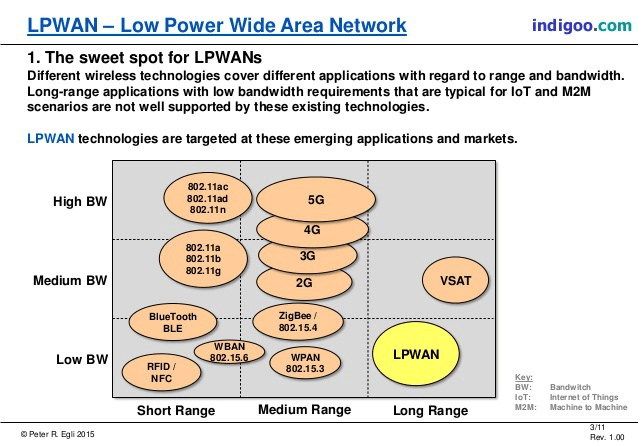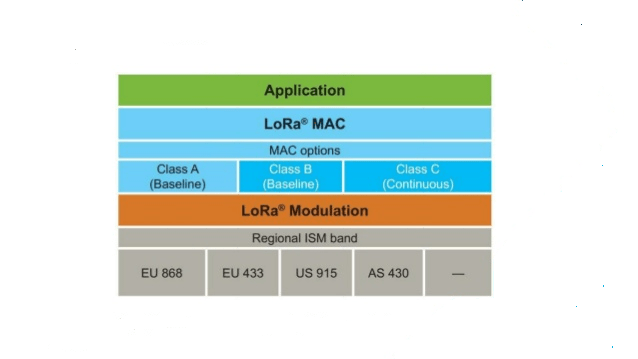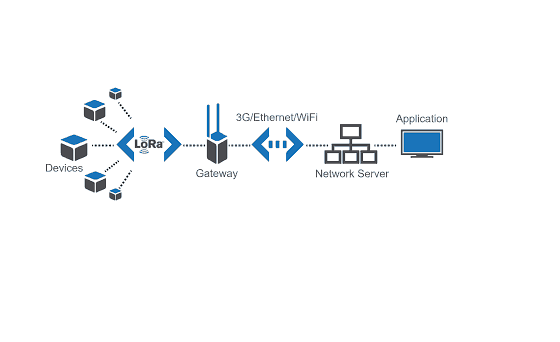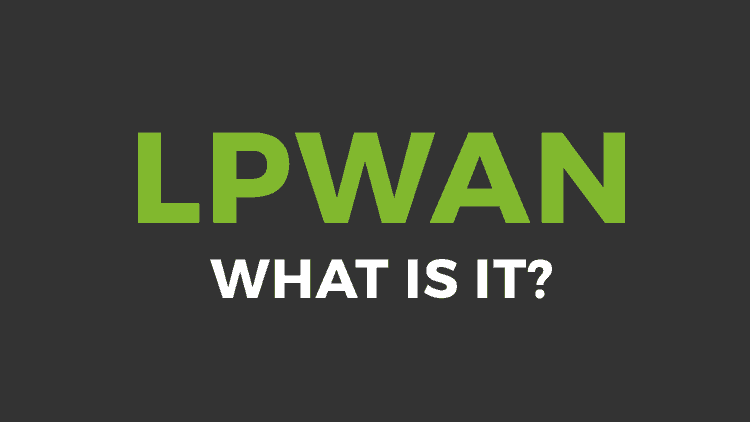What is LPWAN? An introduction to the IoT communications protocol
LPWAN (Low Power Wide Area Network), also known as LPWA or LPN, is a wireless data transport protocol that is now understood as one of the basic protocols for the implementation of IoT.
In order to have a better idea of the relevance of LPWAN we can consider the prediction made by statisca.com of a steady increase in the number of LPWAN devices connected around the world, expecting this number to reach around 3.5 billion devices by 2021.
Clearly, even with these data it is fair to ask ourselves the question: Is LPWAN a standard for IoT?
We must of course accept that the final standards for IoT have yet to be defined, in fact the protocols are in full development and there are several projects that intend to define standards.
However, in most literature LPWAN appears as a valid transport protocol option for certain IoT needs.
In the article “Interoperability of IoT” published in this same blog you will find information on the projects that aim to define standards for IoT.
That being said, we invite you to technically review LPWAN, to understand its needs, and to evaluate the challenges involved in a monitoring scheme. But what is LPWAN? Let’s start with its characteristics.
LPWAN Characteristics
There are three technical features of LPWAN that meet the requirements of IoT, these are:
- Geographical range: LPWAN is designed for wireless data transport between devices separated by distances in the range of kilometers and not meters.
- The amount of data transmitted: LPWAN’s idea is to regulate the non-constant transport of small amounts of data.
- Low power consumption: The protocol is based on the use of devices with batteries that last for years instead of weeks and months.
Well,these features also set LPWAN apart from other wireless technologies such as Wi-Fi, Bluetooth, 3GPP and Zigbee.
The following figure shows a graph showing the space governed by each of the wireless technologies in terms of bandwidth and physical range.

Source: Peter R. Egli, paper available on the Internet
As shown in the graph, it is not possible for a single wireless technology to meet all the requirements of IoT.
What is LPWAN? Well, LPWAN technology almost exclusively meets the needs of applications that require the wireless transfer of small amounts of data, only a few times a day and over long distances.
LPWAN networks are often associated with geographically distant sensor networks and devices that require or can only transmit little information about their status.
ISM
On the other hand, an interesting technical point to mention with LPWAN is the radiofrequency band in which it usually works.
The different products that LPWAN implements work in Europe in the ISM band (Industrial, Scientific and Medical) which represents a spectrum that is internationally reserved for non-commercial use associated with industry, science and medical services.
This band is important because this group of frequencies can be used without the license fee, as long as the restrictions on the transmitted power levels are respected.
This represents another difference between LPWAN and cellular technologies for example, where it is necessary to pay for the right to transmit on a specific frequency.
Please note that for LPWAN there is a difference in the frequency used depending on the region in which you are located, in Europe the band between 867 and 869 MHz is used, in the United States the band between 902 and 928 MHz is used and in Asia it depends on the country, in the case of Japan the band between 920 and 925 MHz is used.
The use of different frequencies means that hardware devices can be used in different countries but require software adjustment to be able to work at a particular frequency.
Disadvantages of LPWAN
The disadvantages that can be pointed out are the following:
-
- The low transmission speed does not allow handling large volumes of data, so elements such as photos and videos are completely discarded.As we have already mentioned, LPWAN allows the creation of sensor and device networks, however, we must say that even in these networks the volumes of telemetry data that can be transported cannot be very large, which rules out very complex elements or those that require a lot of information.
- There are reports of signal attenuation problems when the LPWAN network includes devices located in buildings or separated by physical elements, operating more efficiently in open spaces with secured lines of sight.
- Connectivity between the devices and its application or server is not constant and can be unidirectional; from the device to a capture element, which makes it difficult to control the movement of objects in real time.However, it should be noted that most LPWAN implementations allow two-way communications.
- Another element that LPWAN implementations have to deal with is transmission reliability.
LPWAN implementations introduce different encryption and authentication processes to resolve this protocol weakness.
LPWAN Implementations
There are several implementations of the LPWAN protocol, such as Sigfox, NB-IoT, Weightless, RPMA and LoRaWAN to name a few. There are many differences between each of them in terms of modulation scheme, geographical scope, the amount of data transmitted and their encryption and authentication capabilities.
Here we propose a general review of the LoRaWAN implementation with the idea of clarifying its architecture, which will help us to understand the rest of the implementations.
<h3LoRaWAN
The reader can find in many bibliographies the terms LoRa and LoRaWAN used in many different ways, but they are actually not the same:
LoRa is a radio frequency signal modulation scheme created by Semtech Corporation. This company designs and produces among other elements LoRa chips that will be used as the physical basis of LoRaWAN networks.
LoRaWAN is an implementation of the LPWAN protocol using LoRa technology. LoraWAN is developed by the so-called LoRa Alliance made up of Cisco, IBM and Orange, among others. We can see LoRaWAN as the definition of the protocol and the network architecture on which the applications will interact directly.
The following figure shows the architecture for LoRaWAN:

Source: Presentation by Martin Haas
LoRaWAN defines two network structures:
- Mesh Network: LoRaWAN allows direct communication between end devices without the need for an intermediate element, which provides basic point-multipoint communication.
- Star Network: under this structure the final nodes transmit their messages to elements called Gateways, where the same message can be received by more than one Gateway. This communication will be done wirelessly with the network defined with LoRa elements.
The Gateways then send the data to a central server, as can be seen in this image:

Source: Jensd’s I/O buffer
The communication of the Gateway with the central server can be established by an Ethernet network or any other wireless network scheme available.
Finally, the central server will remove the redundant data, perform security checks and send the corresponding information to the users’ applications.
LoRaWAN Technical Data Sheet:
- Data Transmission: from 250bps to 50Kbps
- Geographical scope: from 10 to 15Km
- Battery life: 10 to 20 años
- Encryption: AES 128
LPWAN and Monitoring
The introduction of IoT undoubtedly implies important challenges for the world of monitoring.
First of all, it is easy to understand that the number and heterogeneity of the devices that can be included in an IoT solution is a challenge for the group that must establish a monitoring platform that includes these devices.
Theoretically we should consider an infinite number of devices as well as the assumption that most of them are “non-IT” and otherwise diverse from one another. This means that much of the IT device monitoring scheme will not be applicable to an IoT monitoring project.
On the other hand, there are different schemes and technologies that can be used to develop the IoT project. An IoT project via a cloud service is different if we undertake the project of creating our own IoT network, if our solution points to IoT based on 5G the scenario is completely opposite from assuming an IoT project based on LPWAN, and what happens if we use one scheme to integrate some devices and another scheme to integrate others?
Therefore, we are at the point where the lack of standardization in IoT protocols and architecture implies a challenge for monitoring.
However, in the case of LPWAN, as a basis for an IoT project, they play against the very fact that these are networks whose communication platform is designed to transmit low volumes of data and that, depending on the implementation, the communication of the devices can be unidirectional.
In any case, undertaking a monitoring project can get started by knowing the devices and sensors that we must integrate and raise with the users or the operational managers of them, the information about what you need to know about these devices:
- What is the current status of the sensor or device?
- What are its possible states?
- What actions should be taken when a particular state is reached?
- Where is the device located? Is it mobile or static?
- What are your valid locations? (If mobile)
- Its firmware version?
- Its battery level?
The next step may be to verify:
- What data is required and who can generate this information? and what data should we obtain from the device or sensor and what data can we obtain from other elements such as gateways and servers?
- How much data is required to meet user expectations? Given the low data transmission capacity of LPWAN networks, the selection of truly relevant information becomes a very important task for successful monitoring.
Another aspect is related to the applications associated with our IoT platform, which may have been developed especially for this solution or are part of the applications already existing on the network.
This review can give us a general idea on how we can deal with IoT platform monitoring and will lead us directly to decide on the technical solution required to finally reach the target of:
- Integrating device information into a dashboard
- Extending the network maps
- Including new application information
- Extending our monitoring procedures, etc.
Without a doubt, having a monitoring platform that is flexible enough and with proven experience in IoT monitoring is the best basis for this.
Pandora FMS has the necessary level of flexibility and experience, so we invite the reader to request more information about Pandora FMS IoT monitoring by filling out this simple form.
What is LPWAN? This article should have answered that question.
Finally, we kindly invite you to comment about your experiences regarding this interesting world of IoT monitoring.




















